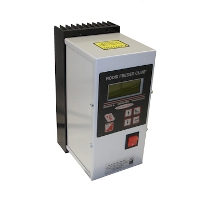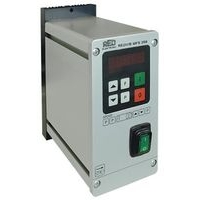On a standard vibratory feeder controller, you only have full power adjustment from 0-100%; however, with certain applications, you may require frequency adjustment. Variable frequency controllers are great upgrades to your vibratory feeder system and they can fix complex problems involving tuning.
Having the ability to adjust the frequency and the amplitude at the same time gives you a great advantage over a standard control system. On a standard controller you only have an output switch selectable from 120Hz (UN-rectified or full-wave) or 60Hz (rectified or half-wave). On a variable frequency control, you have the ability to adjust frequency from 5-300Hz. This allows you to dial in the perfect, harmonic frequency for your feeder bowl, auxiliary hopper, or linear inline.

With this range of adjustment, your vibratory feeder can be regulated by an accelerometer sensor attached to the bowl and controller. This device will regulate the frequency, allowing the feeder to operate at its resonant frequency. A feeder operating at its resonant frequency will perform more efficiently, last longer, save on maintenance costs and consume less power. Once the resonant frequency has been found, the control AUTO feature will maintain the frequency and amplitude as the parts load changes in the bowl. This is especially beneficial for weight-sensitive applications. In some instances, a variable frequency controller is required. For a majority of applications, it is considered an optional upgrade.


